
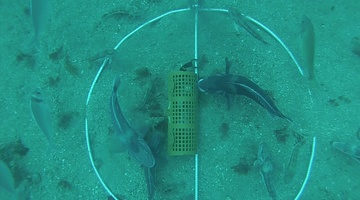
Come and visit Aotearoa New Zealand’s underwater world in this online citizen science project. Discover, count and identify unique fish species that live within our marine reserves ...
READ MORE
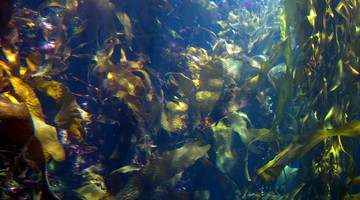
Kelp forests are one of the most biodiverse habitats on Earth. Every nook and cranny is jam-packed with life! This citizen science project wants to understand more about how kelp forests grow and ...
READ MORE
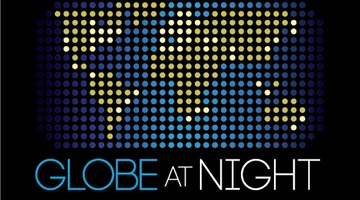
Globe at Night is an international citizen science campaign to raise public awareness of the impact of light pollution by inviting citizen scientists to measure and submit their night sky ...
READ MORE

Project Hotspot was a Taranaki-based citizen science project and one of the Participatory Science Platform (PSP) projects supported by the New Zealand Government. The Ngā Motu Marine Reserve ...
READ MORE

New Zealand has 425,000 kilometres of rivers and streams to look after. Catchment groups are being formed around the country to look after our waterways from the mountains to the sea. These ...
READ MORE

E 425,000 kiromata te roa o ngā awa me ngā kōawa i Aotearoa hei tiaki mā tātou. E whakatūria ana ngā rōpū tiaki rauwiringa wai, huri i te motu, hei tiaki i ngā arawai, i ngā maunga tae atu ki te ...
READ MORE
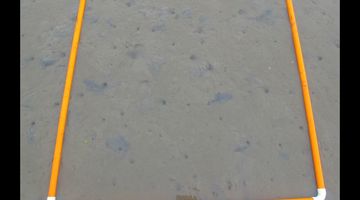
Quadrats are used for sampling purposes. They are squares of a set size placed in a particular habitat such as a rocky shore or forest floor. Plant and/or animal species within the quadrat are ...
READ MORE
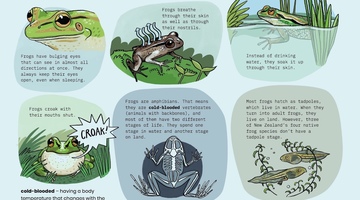
Frogs for the future? is a ready-to-use cross curricular teaching resource. It uses the Ministry of Education’s 2019 Connected article Kimihia Kermit by Philippa Werry. Rights: Crown 2019 Frog ...
READ MORE

Kōura (freshwater crayfish) are a taonga species for Māori, a keystone species for ecosystem dynamics and an indicator species for ecosystem health. They are also a species that have been ...
READ MORE

In this recorded professional learning session, Greta Dromgool and Ben Moorhouse from the Department of Conservation unpack conservation education and: introduce some exciting DOC resources aimed ...
READ MORE
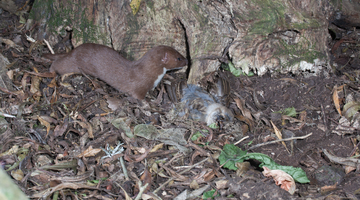
In this recorded professional learning session, Greta Dromgool from the Science Learning Hub and Adrienne De Melo and Ben Moorhouse from the Department of Conservation share the many learning ...
READ MORE
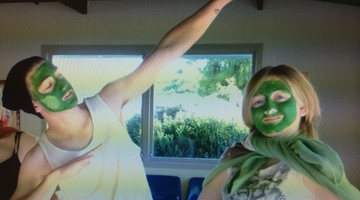
In this recorded professional learning session, Greta Dromgool from the Science Learning Hub and Ben Moorhouse from the Department of Conservation share their excitement about environmental ...
READ MORE
Researcher Erina Watene-Rawiri describes the life cycle of eels. Updated science: In this video Erina explains that the leptocephali – eel larvae – 'float' back upstream on the current. Current ...
READ MORE
There are many natural ways in which water is purified. Unfortunately, in some ecosystems, humans have had drastic impacts on these natural processes and now there are problems with water ...
READ MORE
In this video, David Hamilton explains what time and space means for the water cycle by taking a closer look at Lake Rotorua. Lake Rotorua’s water quality is the result of what happened to the ...
READ MORE

Learn how farms can keep waterways healthy for those downstream and for our precious native freshwater fish, all while benefiting farm health and the farming operation’s bottom line.
READ MORE
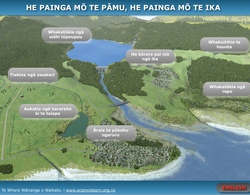
Tirohia ngā rautaki e ora tonu ai ngā arawai mō ērā kei te taha whakararo o te wai me ngā ika taketake, waihoki ka whaihua hoki ngā pāmu, e kore ai hoki e heke iho ngā putanga. Hei tirotiro i te ...
READ MORE
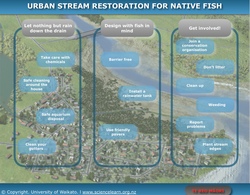
This interactive looks at some of the measures you can take to look after your local stream – because if you’re looking after your local stream, you’re looking after our endangered native fish ...
READ MORE